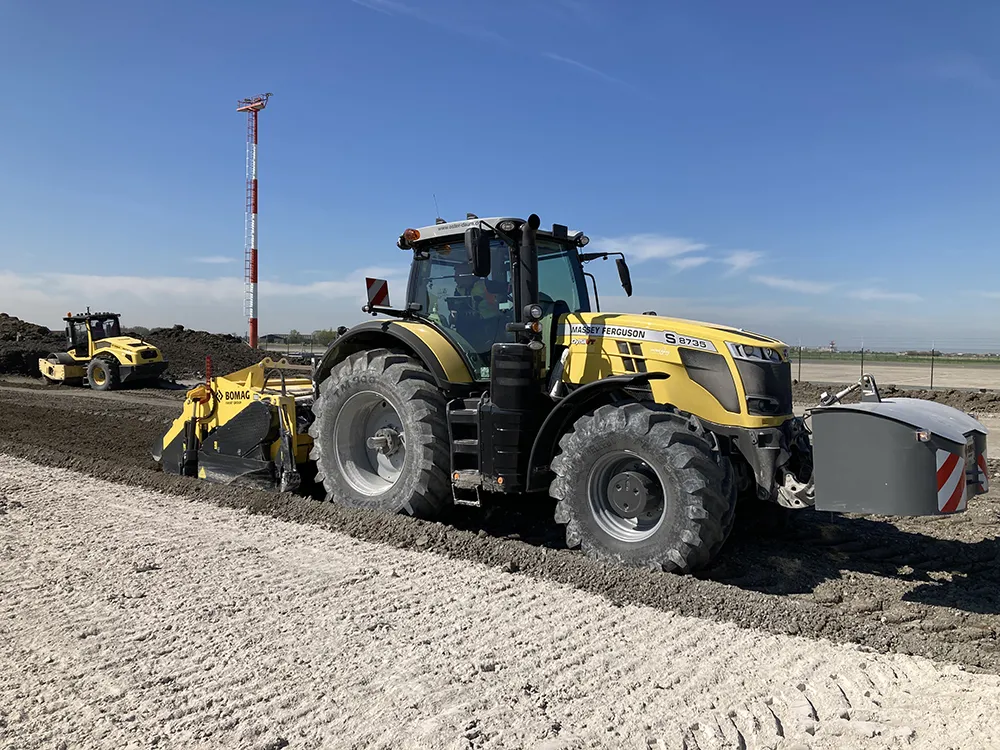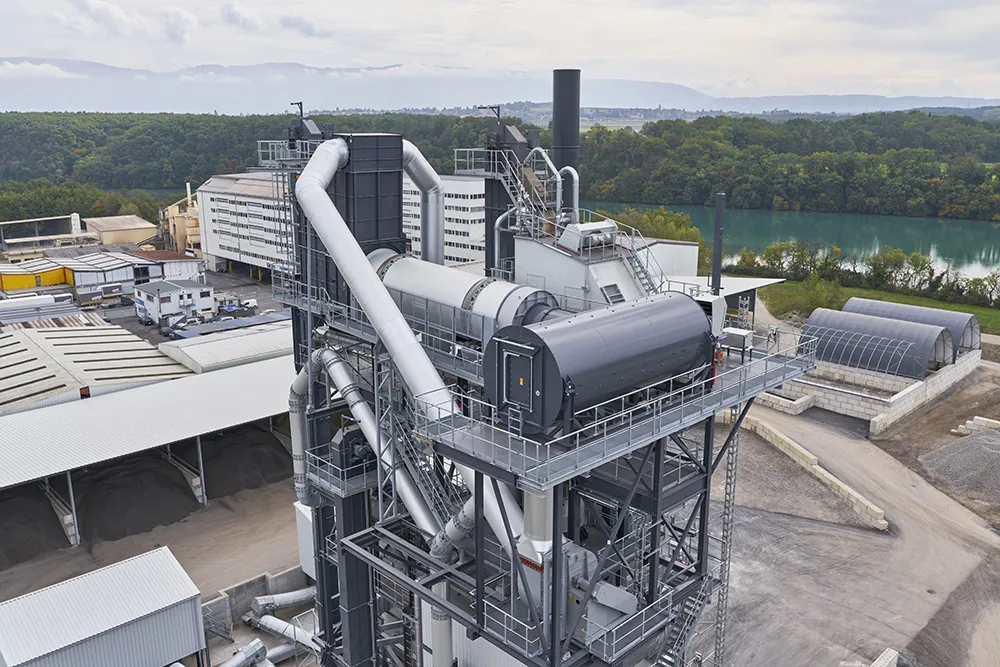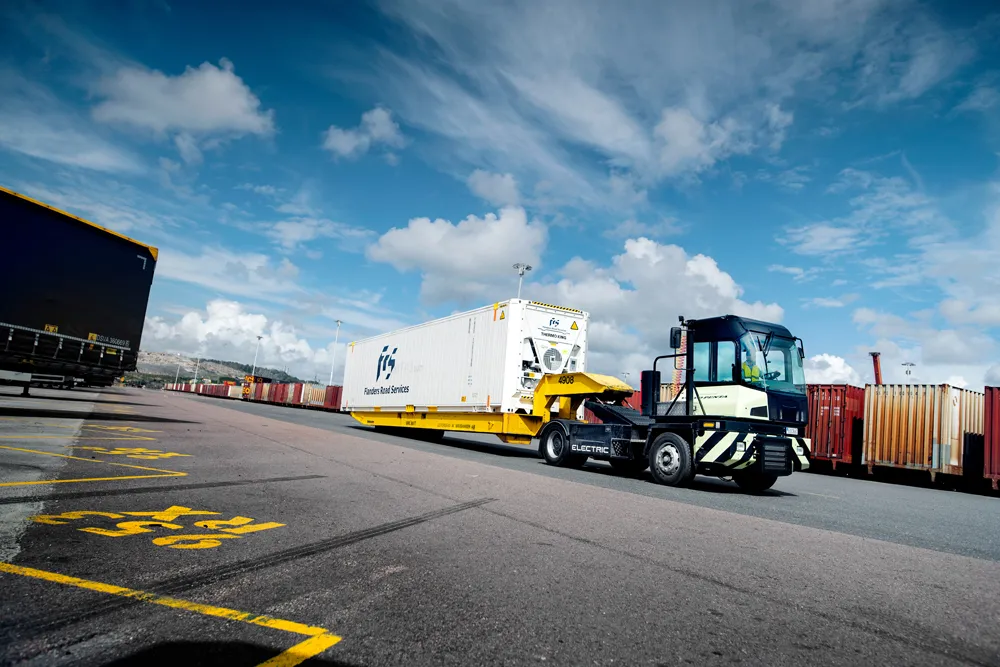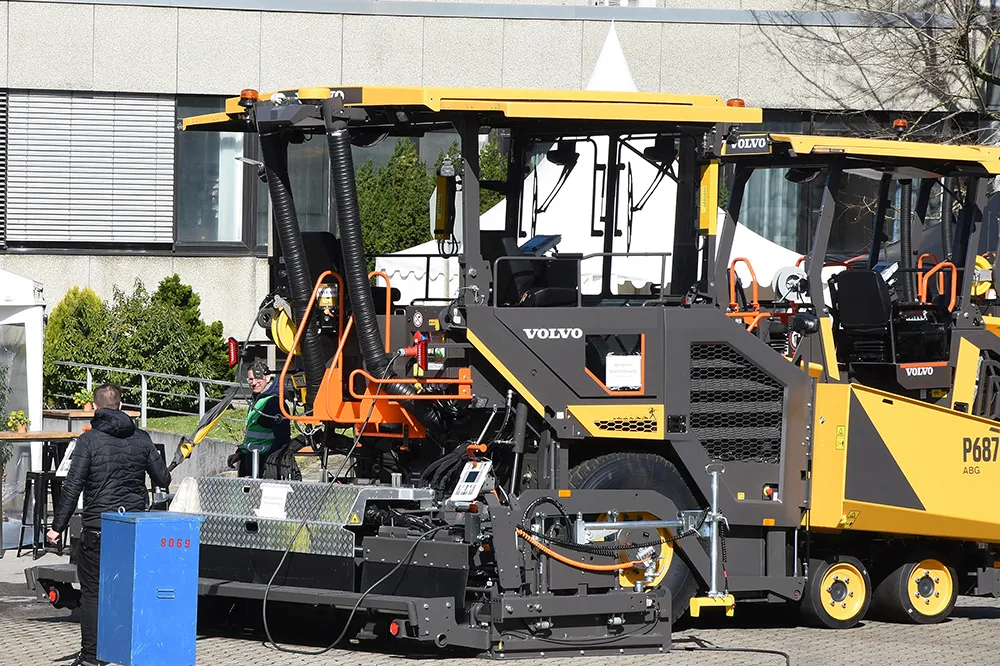
The E+ Screed Heating solution is an innovative option helping customers both reduce their emissions and reduce their own costs. Built for Volvo pavers, it is the first E+ solution designed by Volvo CE. While it is currently available on any of the company’s many D-series, it is specifically aimed at pavers working in city or urban environments, usually at a working width of 5,5 m or less.
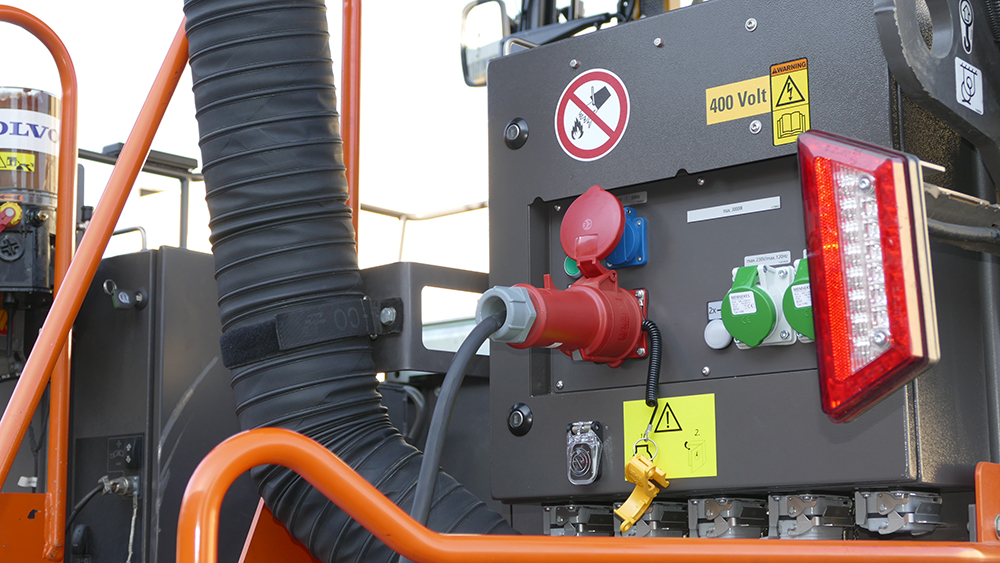 How it works
How it works
E+ Screed Heating allows a screed on the paver to be connected to an external power source without the engine running and without the paving crew being on site. It can be powered either via an external power source like a battery pack or directly from the electrical grid using a standard CEE connector. Normally the screed needs 15-20 kilowatt hours to achieve its working temperatures and using the in-built timer, the screed can be easily preheated to its working temperature.
The option is intended not only for new machines, but it can also be fitted retroactively to other D-series pavers that have already been delivered to customers.
The benefits to customers are considerable.
Reduced noise: Because the engine doesn’t need to be running when pre-heating starts, the paver can be put to work at the earliest opportunity in the morning. This can be critical in urban environments where there are often noise restrictions and machines cannot be started before certain times.
- Extended engine life: Engine idling to heat the screed is approximately 10%, if not more, of the machine’s life, so reducing the time spent on this activity inevitably reduces wear on the engine.
- Reduced costs: Costs can be saved because a paving team does not need to be on site to start the paver. Instead, they arrive on site when the machine is at working temperature. Put simply, it will reduce the total cost of ownership of the paver.
- A more sustainable way of working: From a sustainability perspective, the E+ Screed offers several advantages. It extends the life of the paver and ensures servicing is required at less frequent intervals. It reduces emissions for an average paver by approximately two tons of carbon dioxide every year and it also reduces the number of working hours of the paving crew.
Martyn Luby, Product Manager for Road Machinery at Volvo CE, says: “The E+ solutions will help to further improve the total cost of ownership, but at the same time our environmental and sustainability footprint will be improved – for both new pavers and for pavers already in use by our customers.”
Volvo CE’s D-series pavers, including the P6820D ABG and P7820D ABG, have been built to combine power, ease of operation, fuel efficiency, and lifetime enhancing features to deliver outstanding paving performance. And now with the first of the E+ Screed solutions, they can add even lower total cost of ownership and reduce noise and emissions.
E+ Screed Heating options from Volvo CE will be available in Region Europe first.
Content produced in association with Volvo CE



